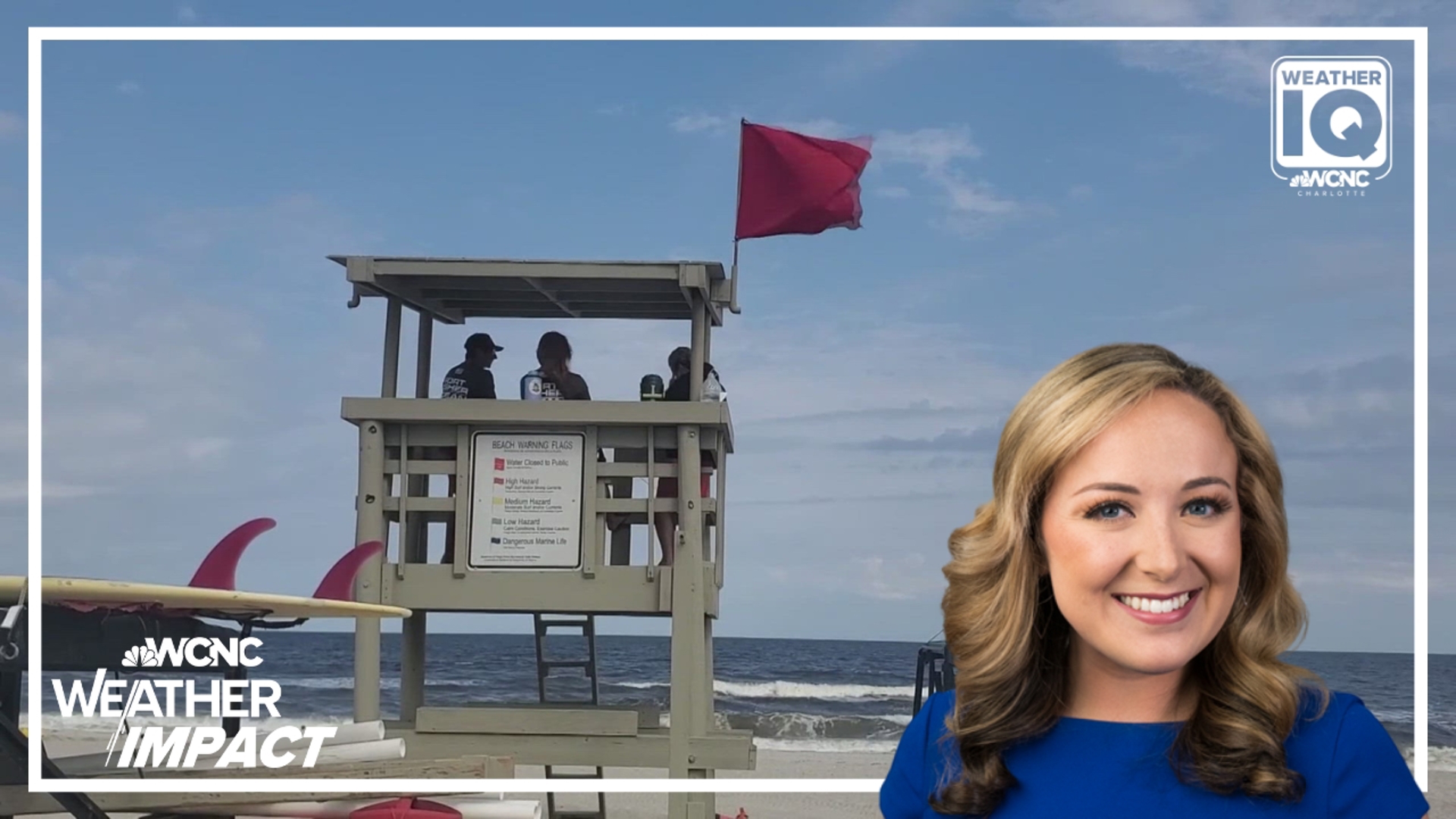CHARLOTTE, N.C. — As of Wednesday, there have been eight deaths in the Carolinas from rip currents in 2024. Warning flags on the beach are just one tool beachgoers can use to stay safe.
Erik Heden, the warning coordination meteorologist at the National Weather Service in Morehead City, North Carolina, said the National Weather Service produces the initial forecast for rip current risk. They also rely on local officials to keep them updated on shifting beach conditions.
"If conditions change, they will fly a different flag," Heden explained. "But just as importantly, they will call us, and we'll change our forecast."
Heden said, within the last two years, beaches across the country have finally consolidated beach warning flags to follow the United States Lifesaving Association (or USLA) standards. This means people should see the same colored flags wherever they go.
"There's always at least a medium risk in the ocean," Heden said. "We love it, but you got to respect the ocean. It's not a pool. It's not something that a lot of folks may be used to."
Common flag colors
A yellow flag represents a medium hazard which indicates moderate surf and rip currents.
When flags are upgraded to red, beachgoers are advised to not go into the water due to high surf and strong currents.
Double red flags are issued when water is closed to the public. In these cases, a person could be fined or even arrested for going in the water..
There is also a purple flag designation for dangerous marine life, like the presence of man-of-war jellyfish, stingrays or other dangerous fish.
RELATED: Body of teenager recovered after being pulled under water by rip current on the Outer Banks
Additional flag colors
Sometimes there is a red and yellow flag with a red stripe over a yellow one. This means there are lifeguards in the area, which is one of the easiest ways to stay safe.
According to the USLA, the chance a person will fatally drown while attending a beach protected by USLA-affiliated lifeguards is one in 18 million.
The danger of rip currents
A rip current is a narrow channel of fast-moving water that can reach speeds up to eight feet per second. This is faster than an Olympic swimmer!
Rip currents are the No. 1 weather-related killer in the United States. Experts say every year knowing what not to do is as important as what you should do.
Here are great tips on what to do when caught in a rip current.
Contact Brittany Van Voorhees at bvanvoorhe@wcnc.com and follow her on Facebook, X and Instagram.

